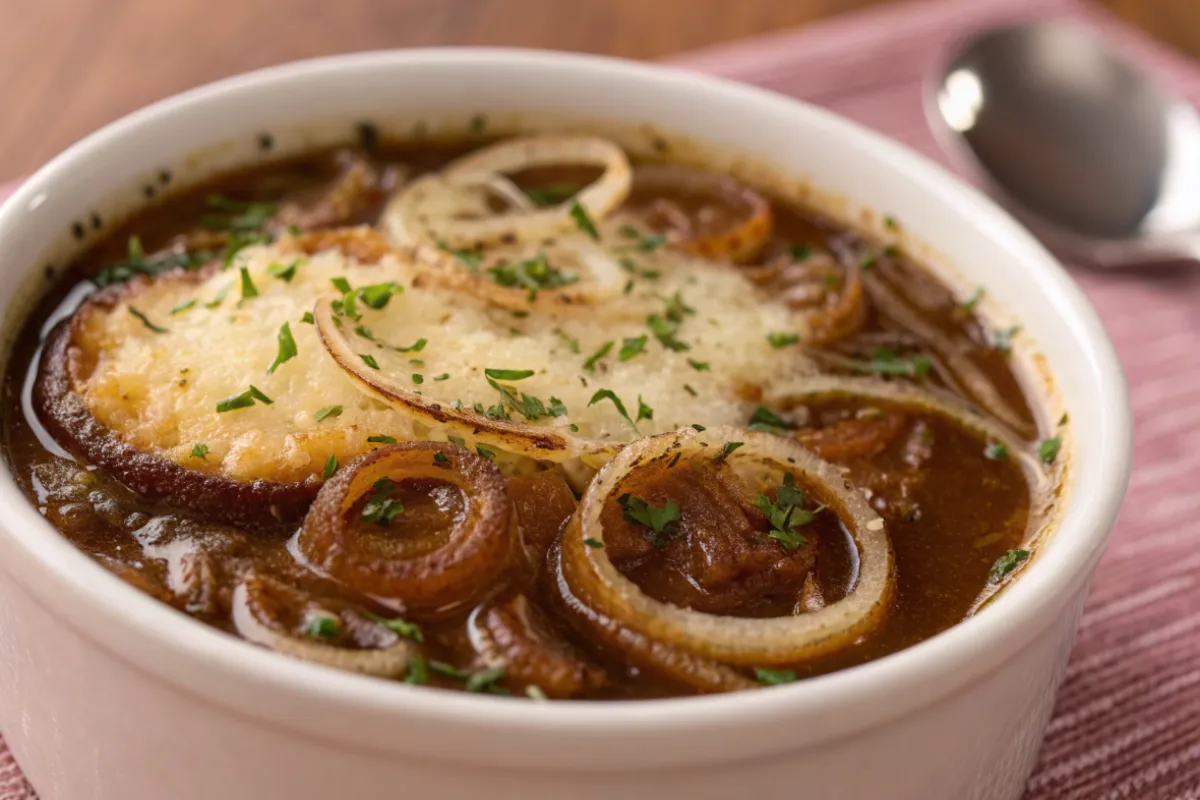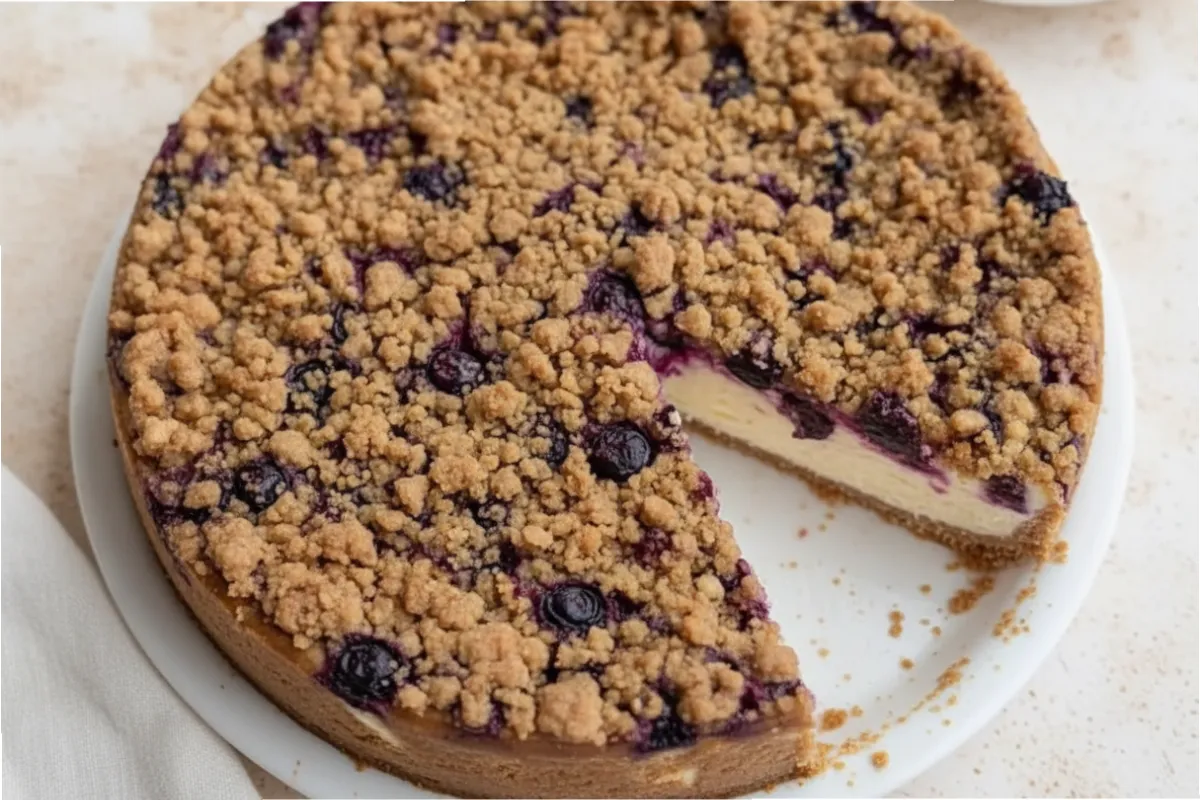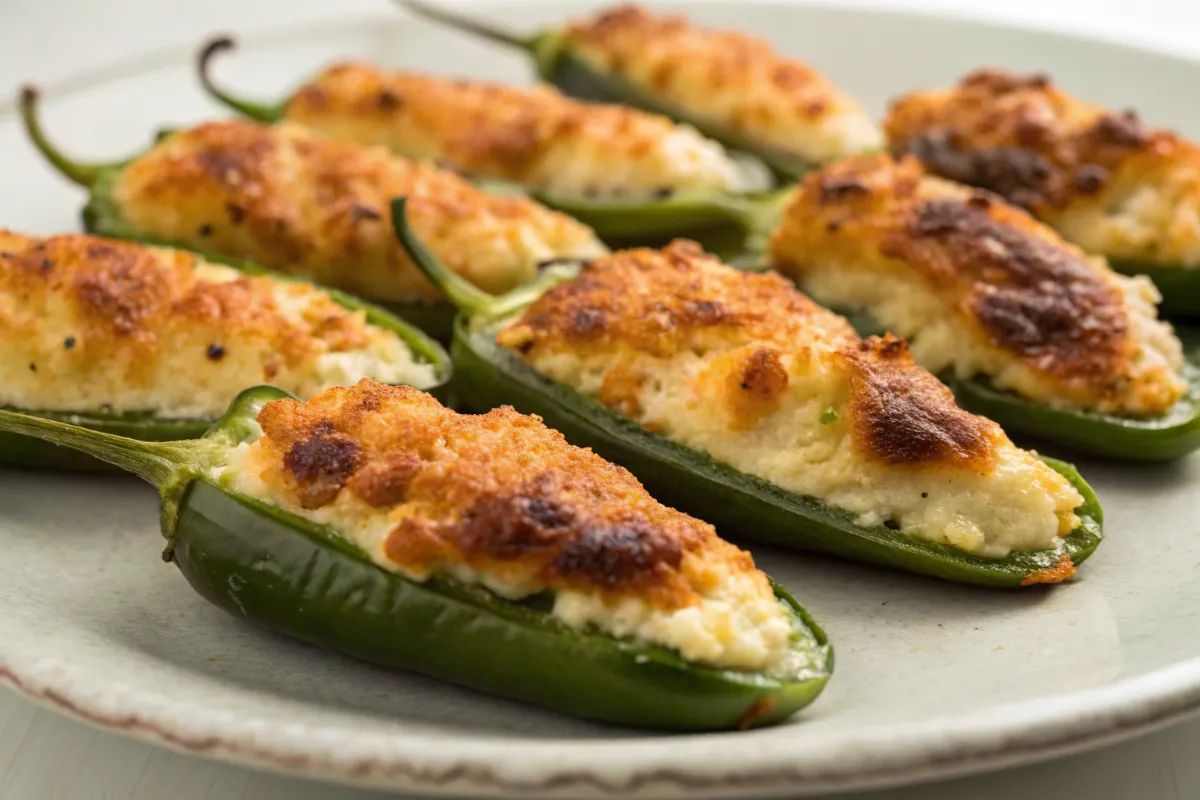- Patience is key: caramelize onions low and slow for deep, savory flavor—don’t rush or burn them.
- Prep ahead: slice onions, grate cheese, and toast bread in advance to simplify final assembly.
- Use a heavy pot and deglaze thoroughly to capture fond for maximum depth in the broth.
- Make it yours: swap stocks, cheeses, or add miso/beer/cream for vegetarian, ale, or creamy variations.
- Season thoughtfully: salt in stages and taste after reduction to avoid over-salting the concentrated broth.
There is nothing quite like the aroma of butter and alliums sizzling in a heavy pot. It transforms a few humble ingredients into my absolute favorite onion soup recipe. This isn’t just dinner; it is a warm hug in a bowl, perfect for chilly evenings or when you need deep comfort. While it feels fancy enough for a festive starter, this dish is actually a forgiving, budget-friendly meal. It fits perfectly into a relaxed weekend cooking session where you can let the pot do the work while you unwind with a glass of wine.

Table of contents
Get a Head Start
Cooking this onion soup recipe takes time, but the active work is minimal. To ensure you aren’t rushing right before dinner, you can tackle several steps in advance. This makes the final assembly a breeze.
- Slice the Onions: You can slice your onions up to two days in advance. Store them in an airtight container in the fridge. This actually helps soften the cell walls, speeding up cooking slightly.
- Grate the Cheese: Grate your Gruyère or Swiss cheese the morning of. Keep it chilled until you are ready to broil.
- Toast the Bread: Slice your baguette and toast the rounds in the oven beforehand. Store them in a paper bag at room temperature.
Onion Soup Recipe Card
Why This Bowl is Better Than the Rest
This particular onion soup recipe stands out because it prioritizes patience over shortcuts. Many recipes rush the browning process, adding sugar to fake the color. We don’t do that here. We rely on the natural breakdown of sugars in the vegetable to create an authentic, deep amber base. This method results in a broth that is rich, not overly sweet, and incredibly savory.
Another reason this recipe works is its versatility. While traditional versions rely heavily on beef stock, you can easily customize this.
- Vegetarian: Swap beef broth for a high-quality mushroom broth to maintain that umami punch.
- Gluten-Free: Simply use gluten-free baguette slices for the topping.
- Alcohol-Free: Use a splash of apple cider vinegar instead of wine for acidity.
Understanding the science of the Maillard reaction helps you realize why low and slow heat is essential for the best flavor profile.
Chef’s Secrets for Perfection
I have made this onion soup recipe hundreds of times. over the years, I have learned a few tricks that make a massive difference in the final bowl.
- Don’t Rush the Onions: Keep the heat medium-low. If you burn the onions, the broth will taste bitter. If they look dry, add a splash of water, not more oil.
- Deglaze Thoroughly: When you add the wine or sherry, scrape the bottom of the pot. Those brown bits, called fond, contain the deepest flavor.
- Use the Right Pot: A heavy-bottomed pot or Dutch oven is non-negotiable. It distributes heat evenly and prevents scorching spots.
- Season in Stages: Salt your onions at the beginning to draw out moisture, but taste your broth before serving. As the liquid reduces, it gets saltier.
Spin the Onion Soup Recipe Your Way
While the classic French style is popular, this onion soup recipe is actually a fantastic canvas for other flavors. You don’t have to stick to the rules every time.
The English Ale Variation
If you prefer a heartier, maltier flavor, try the English version. Instead of white wine, use a good quality brown ale or stout. The bitterness of the beer cuts through the sweetness of the onions beautifully. For the topping, swap the nutty Gruyère for a sharp, mature English Cheddar. It creates a bolder profile that pairs exceptionally well with dark rye bread.
The Creamy “Soubise” Style
Sometimes I crave texture. For a velvety finish, you can turn this onion soup recipe into a creamier bisque. Once the onions are caramelized and the stock is added, transfer half of the soup to a blender. Blitz it until smooth and pour it back into the pot. Stir in a half-cup of heavy cream. This variant is incredibly luxurious and works well as a small starter for an elegant dinner party.
The Umami-Bomb Vegan Version
Vegetarians often miss out on the depth of beef broth, but this variant solves that. Use a rich vegetable stock and add a tablespoon of white miso paste and a dash of soy sauce during the simmering process. These ingredients mimic the savory qualities of meat. Use vegan butter for caramelizing and top with dairy-free mozzarella.
If you love rich, broth-based meals, you must try my Vegetable Beef Stew as your next weekend project.
Common Questions (FAQs)
Yellow onions are the gold standard. They have a high sulfur content which mellows into a rich, complex sweetness when cooked. Red onions can turn the soup a gray color, and sweet onions can be cloying.
Bitterness usually comes from burning the onions or the garlic (if you added it). If you scorch the onions during the caramelization phase, that burnt flavor permeates the liquid. Keep the heat moderate and stir often.
In this onion soup recipe, we use a little flour sprinkled over the onions before adding liquid. This creates a light roux. If you are gluten-free, you can skip the flour; the soup will just be thinner, which is still traditional in some French regions.
Time to Get Cooking
Mastering this onion soup recipe is a culinary rite of passage that is surprisingly easy to achieve. It teaches you the value of patience and the magic of simple ingredients. Whether you are cooking for a date night or just treating yourself, this bowl delivers big flavor.
Don’t be intimidated by the cooking time; most of it is hands-off. Once you break through that cheesy crust and hit the savory broth below, you will know it was worth every minute.











Leave a Reply